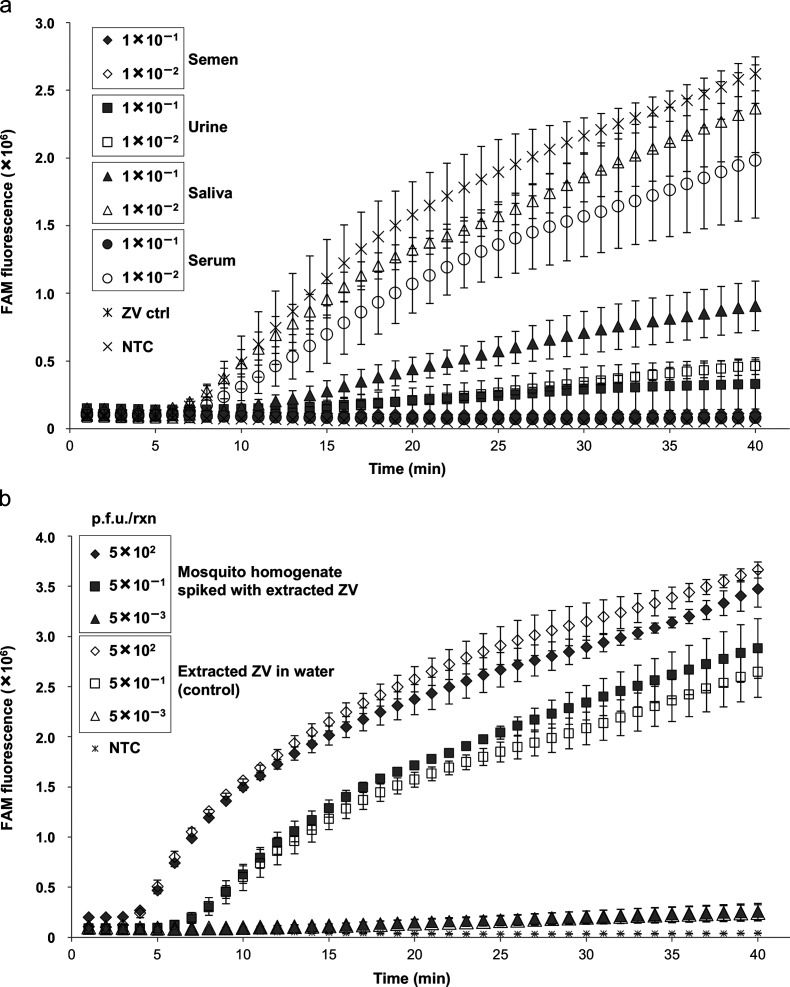Fig. 4.
Effect of crude samples on the sensitivity of the ZIKV RT-RPA assay. (a) Inhibitory effect of semen, urine, saliva and serum samples diluted 10-fold and 100-fold on the ability of the ZIKV RT-RPA assay to detect extracted nucleic acid from cultured Zika virus (South American strain – KU501215) used at 1×102 p.f.u. per reaction in each sample. The fluorescence signals from these are compared to the signal generated from the amplification of 1×102 p.f.u. per reaction of the same extracted virus in nuclease-free water and the non-template control (NTC). (b) Inhibitory effect of homogenized mosquito preparations on the performance of the ZIKV RT-RPA assay. Crude neat homogenized pooled mosquito samples were spiked with extracted nucleic acid corresponding to 5×102 p.f.u. from cultured ZIKV (South American strain – KU501215) and diluted 1000-fold and 100 000-fold. Amplification of these in the ZIKV RT-RPA assay was compared to the signal generated for the same dilutions of viral nucleic acid in nuclease-free water and the non-template control (NTC). Amplification curves show the average total fluorescence values from three independent ZIKV RT-RPA assays; standard deviations are represented as error bars.

